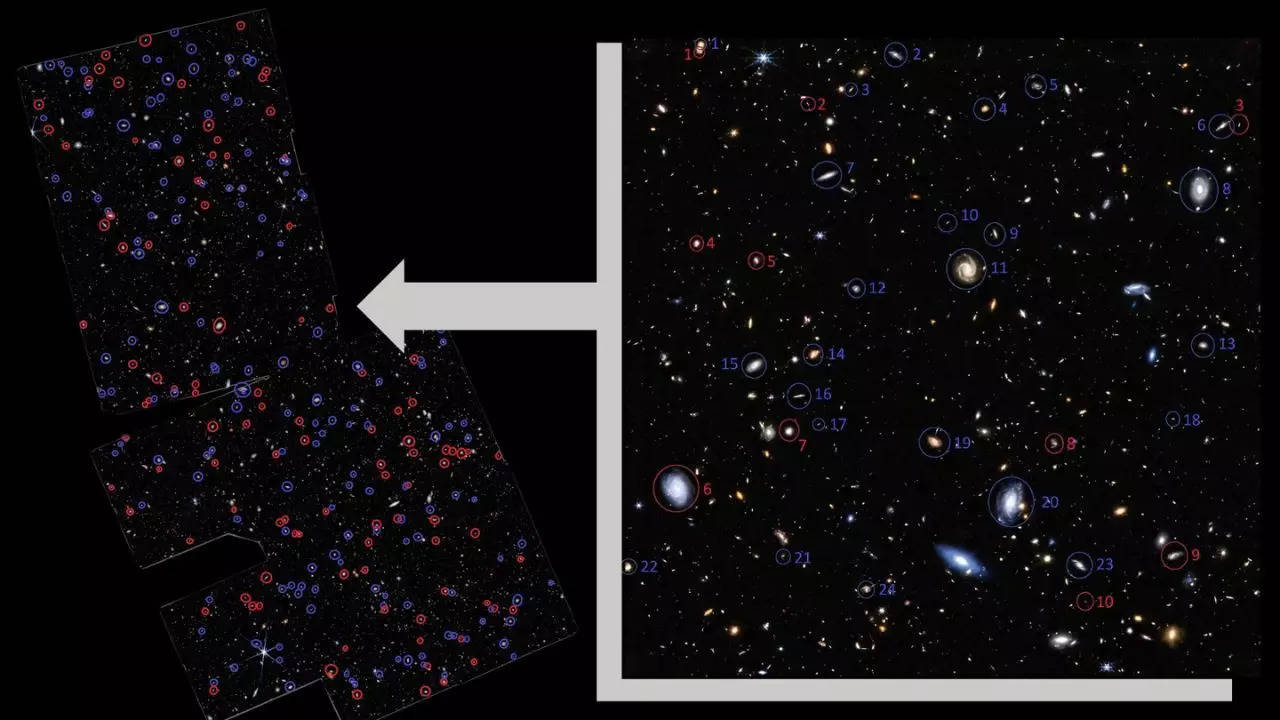Scientists have long been intrigued by the secrets of the universe, and the James Webb Space Telescope (JWST) has provided unprecedented information since it started observing deep space in mid-2022. A recent JWST discovery posed some interesting and surprising questions: Is it possible that our entire universe is contained within a black hole? The bold hypothesis can potentially explain a mysterious cosmic phenomenon seen in the rotation of far-off galaxies.
James Webb Space Telescope uncovers surprising galaxy rotation pattern
The JWST's observations of the distant galaxies disclosed an intriguing and mysterious pattern. Approximately two-thirds of the galaxies rotate clockwise, and the remaining third rotate counterclockwise. Scientists had predicted a more or less equal proportion, presuming that the rotational direction would be random. The uniformity hints at the presence of some force or structure underneath that might be affecting the galaxies' rotation on a cosmic scale.

This finding is based on observations by the James Webb Space Telescope Advanced Deep Extragalactic Survey (JADES). Kansas State University lead investigator Lior Shamir mentioned two potential explanations for this unexpected trend: either the universe itself was created with a rotational motion, or existing cosmological theory must be rethought or reconsidered.
The discoveries from the James Webb Space Telescope have ignited a novel theory about black holes in the cosmos.
A proposal put forward long ago is what’s called black hole cosmology. According to this idea, our entire universe could potentially reside within a black hole, itself being an element of an even grander cosmic structure. Under this scenario, the event horizon—that critical boundary beyond which nothing escapes, not even light—would effectively mark the outer limit of our universe.
Nikodem Popławski, a theoretical physicist and an ardent advocate of this idea, suggests that black holes could serve as origins for entirely new universes. According to his hypothesis, once matter gets drawn into a black hole, it behaves like a tightly wound spring which eventually snaps back, thus generating a fresh universe. He posits that this phenomenon might have triggered the Big Bang and led to the subsequent swift growth of our cosmos.
Popławski elaborates on how a rotation within a black hole could influence the characteristics of the resulting universe. Should observations made by JWST provide indications of an apparent cosmic preferential spin, this would strongly support the black hole cosmology theory. In essence, if the cosmos consistently rotates, it would suggest that this rotational characteristic stems from the spin of the original black hole from which our universe emerged.
The movement of the Milky Way and how it might affect the JWST's observations of distant galaxies.
An alternate possible reason for the observed rotational patterns could relate to the movement of the Milky Way itself through space. Certain researchers suggest that the rotating nature of our galaxy might be altering the way JWST views distant galaxies receding from us. Should this be true, it may compel astrophysicists to reassess distance calculations across the cosmos and potentially resolve debates about the rate at which the universe expands.
Although both these reports are intriguing, Lior Shamir emphasizes the necessity for further investigation to truly understand what’s happening. He stated, “It's crucial to determine whether the universe has an actual preferred orientation.” Such research is vital for broadening our comprehension of the laws governing the cosmos and might lead to groundbreaking insights into how the universe was formed and its fundamental structure.
Also Read | Is Sunita Williams going to receive additional compensation for her prolonged time in space? Below is the NASA payment structure for her 9-month mission.